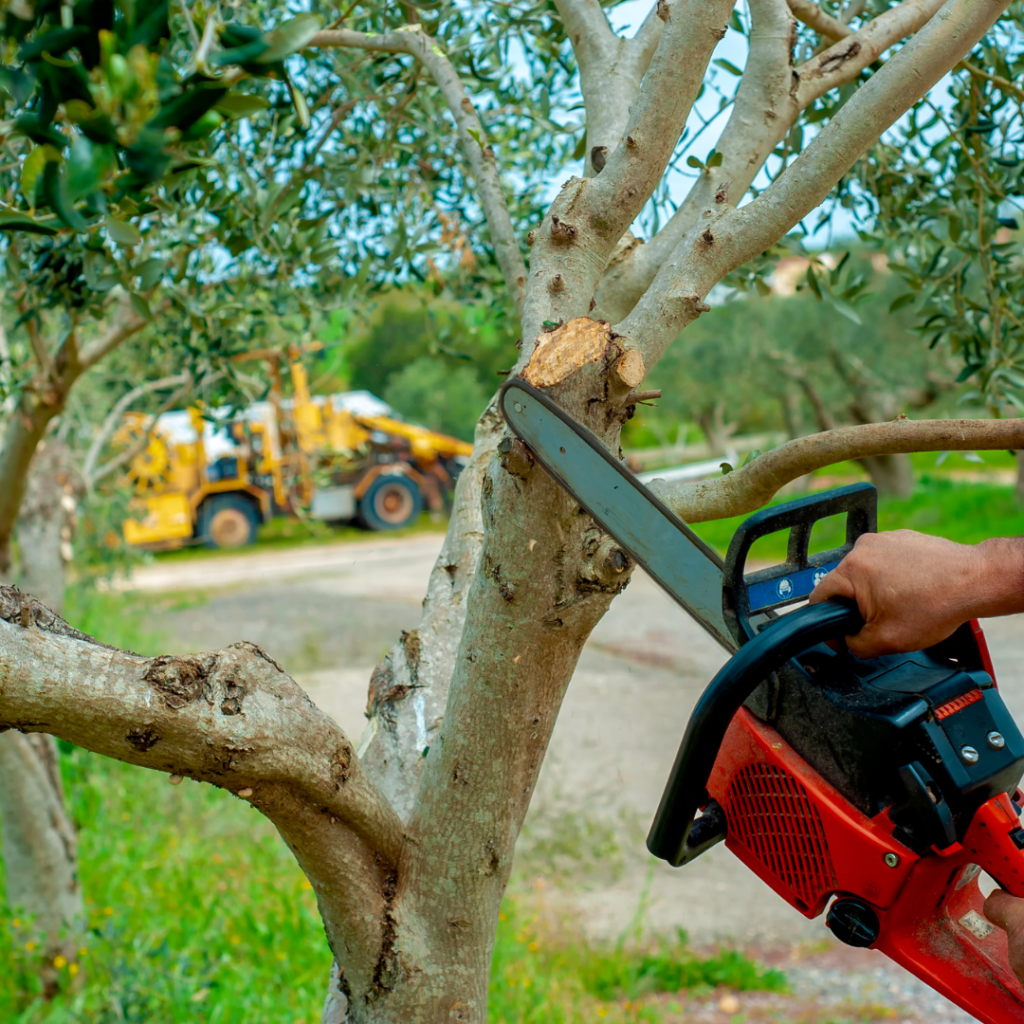In the realm of landscaping and property maintenance, the significance of trees cannot be overstated. They offer more than just aesthetic appeal; they provide shade, oxygen, and contribute to a healthier environment. However, ensuring their health and longevity requires more than just occasional pruning. This is where commercial tree services come into play, blending the artistry of arboriculture with the precision of modern science. “The Art and Science of Commercial Tree Services” delves into this intricate blend, exploring how professionals in the field harmonize traditional techniques with cutting-edge technology to care for trees in commercial settings. From routine maintenance like pruning and trimming to more specialized services such as disease management and emergency tree removal, this blog series will unravel the complexities behind maintaining healthy, vibrant trees in commercial landscapes. Join us as we uncover the secrets behind the beauty and resilience of these natural giants, where artistry and science converge to ensure their enduring presence.
Understanding the Importance of Commercial Tree Services
Commercial tree services are vital for maintaining the health, safety, and aesthetics of properties. Beyond simply trimming branches or removing trees, these services encompass a blend of artistry and science aimed at preserving the natural beauty of landscapes while ensuring the well-being of both trees and people. In this article, we’ll delve into eight key aspects highlighting the significance of commercial tree services in today’s urban environments.

Enhancing Property Aesthetics
Trees are not just functional elements; they contribute significantly to the visual appeal of commercial properties. Properly maintained trees with well-trimmed canopies and healthy foliage create an inviting atmosphere that attracts customers and enhances the overall ambiance of the surroundings. Commercial tree services play a crucial role in preserving this aesthetic appeal by offering expert pruning, shaping, and landscaping solutions tailored to each property’s unique needs.
Promoting Environmental Health
Trees play a pivotal role in urban ecosystems by absorbing carbon dioxide, producing oxygen, and providing habitat for wildlife. Commercial tree services focus on preserving and enhancing these ecological benefits through practices such as tree planting, soil management, and pest control. By maintaining a healthy tree canopy, these services contribute to air purification, stormwater management, and biodiversity conservation, thereby fostering a more sustainable urban environment.
Ensuring Public Safety
Neglected or diseased trees pose significant safety hazards to pedestrians, vehicles, and nearby structures. Commercial tree services conduct thorough assessments to identify potential risks and implement proactive measures to mitigate them. From regular pruning to emergency tree removal, these services prioritize public safety by eliminating unstable branches, addressing root hazards, and responding promptly to storm damage or other emergencies.
Supporting Economic Development
Well-maintained landscapes, including trees, enhance the market value of commercial properties and attract prospective tenants, customers, and investors. Commercial tree services help property owners maximize their return on investment by preserving the health and aesthetics of trees, thereby enhancing property appeal and contributing to overall economic development in the community.
Mitigating Liability Risks
Property owners have a legal responsibility to ensure that trees on their premises do not pose a danger to others. Failure to address hazardous trees can result in costly liability claims in the event of property damage or personal injury. Commercial tree services offer professional liability assessments and risk management strategies to minimize legal exposure and protect property owners from potential litigation.
The Science Behind Tree Health Assessments
Maintaining the health of trees on commercial properties requires more than just visual inspection or guesswork. It involves a systematic and scientific approach to assessing various aspects of a tree’s well-being, from its root system to its canopy. In this article, we’ll delve into the intricate science behind tree health assessments, exploring the tools, techniques, and principles arborists use to evaluate the vitality of trees and ensure their long-term sustainability.
Understanding Tree Biology
Tree health assessments begin with a fundamental understanding of tree biology. Arborists study the anatomy, physiology, and life cycles of trees to identify normal growth patterns and detect deviations that may indicate stress, disease, or environmental factors affecting tree health. By recognizing the unique characteristics of different tree species, arborists can tailor their assessment methods to specific needs and requirements.
Soil Analysis and Nutrient Management
Healthy soil is essential for supporting robust tree growth and development. Arborists conduct soil tests to analyze nutrient levels, pH balance, and soil compaction, providing valuable insights into the tree’s nutritional needs. Based on these findings, they may recommend soil amendments, fertilization programs, or mulching techniques to optimize soil health and promote healthy root growth, which is crucial for overall tree vitality.
Assessing Root Health and Structure
The root system is the foundation of a tree’s health and stability, yet it’s often hidden from view. Arborists utilize specialized tools such as soil probes, air excavation equipment, and ground-penetrating radar to assess root health, structure, and distribution below ground. By evaluating root collar diameter, root plate stability, and root-to-shoot ratio, they can determine the root system’s capacity to support the tree and identify any issues that may compromise its stability or nutrient uptake.
Diagnostic Techniques for Pest and Disease Identification
Trees are susceptible to a variety of pests, pathogens, and environmental stressors that can weaken their defenses and compromise their health. Arborists employ diagnostic techniques such as visual inspection, pest trapping, bark sampling, and laboratory analysis to identify signs of pest infestation, disease infection, or nutrient deficiencies. Early detection is critical for implementing timely intervention measures to mitigate damage and restore tree health.
Monitoring Environmental Stressors
Trees are constantly exposed to environmental stressors such as drought, pollution, temperature fluctuations, and soil compaction, which can impact their health and vigor. Arborists use data loggers, weather stations, and environmental sensors to monitor key parameters such as soil moisture, air temperature, humidity levels, and atmospheric pollutants. By tracking environmental conditions over time, they can assess the cumulative effects of stressors on tree health and implement adaptive management strategies to mitigate risks.
The Eco-Friendly Approach to Commercial Tree Care
In today’s environmentally conscious world, businesses are increasingly seeking eco-friendly solutions for their operations, including tree care. Adopting sustainable practices not only benefits the environment but also contributes to the long-term health and vitality of commercial landscapes. In this article, we’ll explore key principles and strategies for implementing an eco-friendly approach to commercial tree care.
- Organic Fertilization and Soil Health: Utilizing organic fertilizers and soil amendments promotes soil health, enhances nutrient availability, and stimulates beneficial microbial activity, fostering robust tree growth while minimizing environmental impact.
- Mulching for Moisture Retention: Applying mulch around trees conserves soil moisture, suppresses weed growth, and regulates soil temperature, reducing the need for irrigation and promoting water efficiency in commercial landscapes.
- Integrated Pest Management (IPM): Implementing IPM strategies focuses on preventing pest and disease problems through cultural practices, biological controls, and selective use of low-toxicity pesticides, minimizing chemical inputs and preserving natural ecological balances.
- Proper Pruning Techniques: Adopting pruning techniques that respect tree biology and natural growth patterns promotes structural integrity, reduces stress, and enhances aesthetic appeal, while minimizing the risk of disease transmission and unnecessary tree removal.
Conclusion
The art and science of commercial tree services are not just about trimming branches or removing stumps; it’s about preserving the beauty of our landscapes while ensuring safety and sustainability. Whether it’s pruning to enhance tree health or clearing land for new developments, the expertise and precision required are truly an art form. At Tree Service Legends, we understand this delicate balance and strive to deliver top-notch services that exceed expectations. With our team of skilled professionals and state-of-the-art equipment, we’re committed to maintaining the natural beauty of Ocala, FL, and its surroundings while safeguarding properties and promoting environmental stewardship.
If you’re in need of expert tree care or have questions about our services, don’t hesitate to reach out to Tree Service Legends. You can contact us at (352) 558-2348 or visit our website for more information. Let us help you enhance the beauty and safety of your property with our exceptional tree care solutions.
